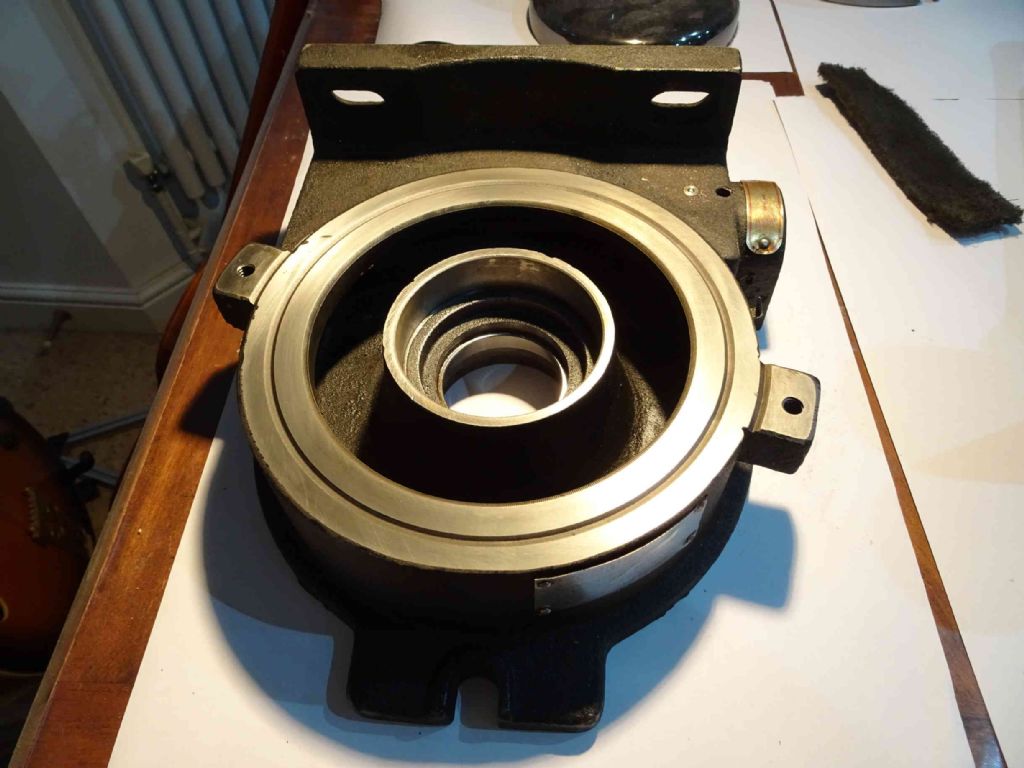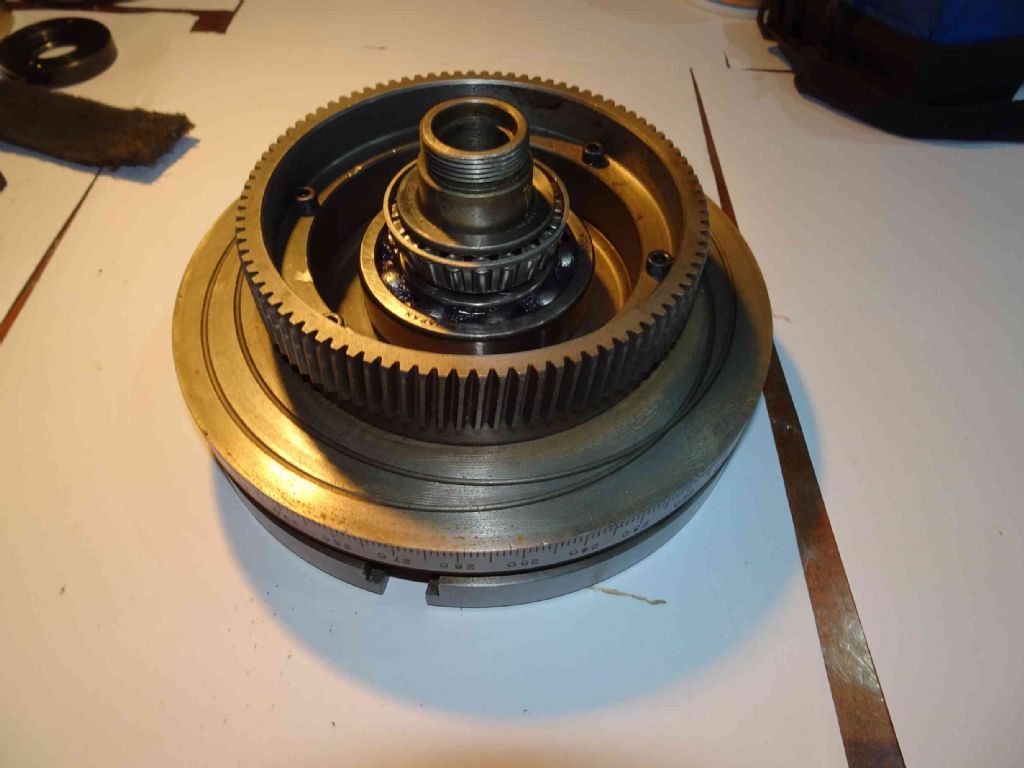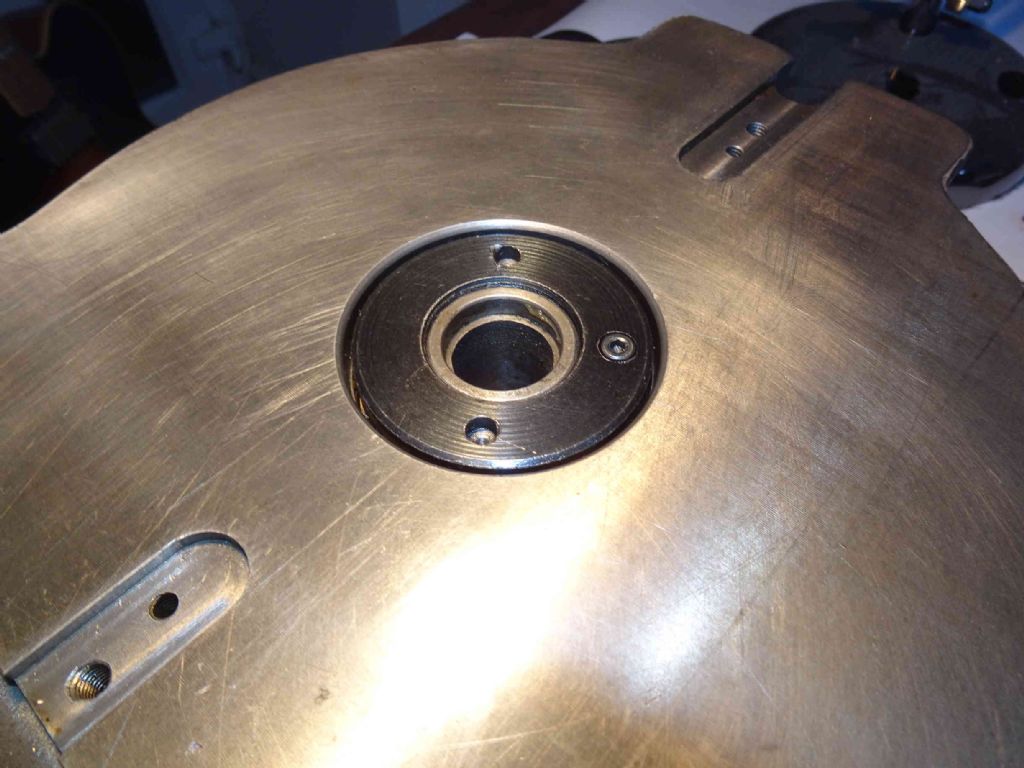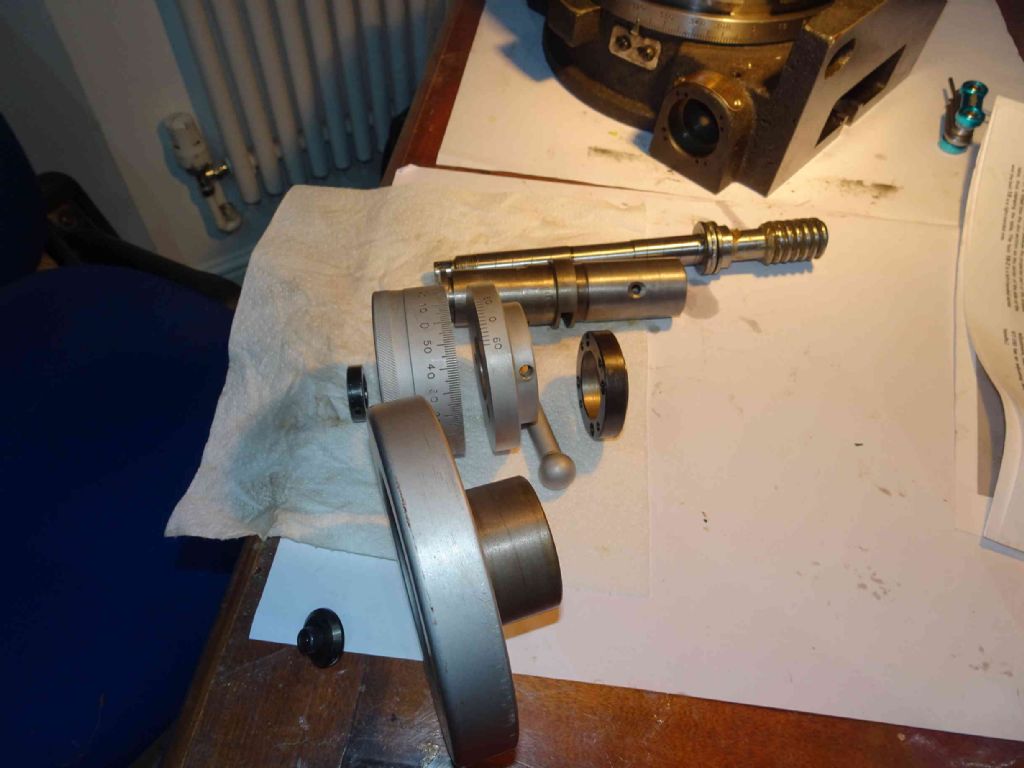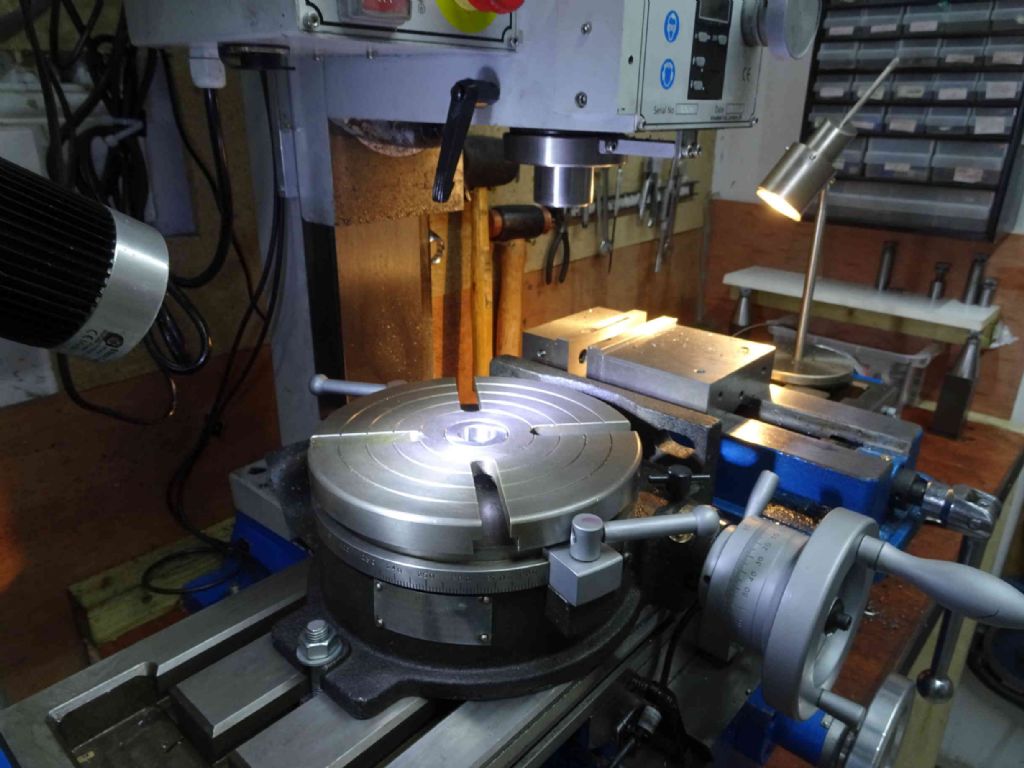I was debating in another thread if I wanted a compressor or a rotary table for Christmas. As my birthday is shortly after Xmas, the compressor I fancied had 30% off on black Friday and a kind Forum member responded to my Wanted, i have got both!
Rightly or wrongly I decided to take the table apart to clean it up (and also see what I bought). The table is and 8 inch horizontal / vertical from Excel in Coventry probably from around 1990 (+/-5 years) based on the phone number format of the label.
As the subtitle indicates I didn't take an pictures stripping it down, so imagine this backwards!
Firstly, when I got it apart, there was a lot of caked on gunk inside, mainly on the gear, but also on the flats which were the main bearings. I think this was due it not having been used for a LONG time.
This is the base.

And this the table

you can see here that it's a substantial machine. as well as the cast iron bearing surfaces with nice oil channels, it has a standard bearing at the top and an angular bearing at the bottom.
The whole assembly is held together with a threaded washer thing with a set set screw to hold it steady.

I haven't fully understood this part. The washer is split in half horizontally where the set screw is. The exact position of the washer and force on the set screw has a fairly delicate relationship with the movement of the table. A few millimeters more turn and the table is jammed. Excel were kind enough to send me a user guide for their current table (which may or may not be this one), but it didn't cover strip down.
However, however I managed to do it I seem to have ended up with good results.
Rather than do a blow by blow of the worm and handle assembly, here is a kind of exploded view.

what I found was that you can't put the worm in with the table in place. This, of course after I'd put all of that together!
It's a bit blurry so… just in from the of the worm is a thrust bearing and washers. This goes inside the next bit down which is bored offset so you can rotate the whole worm to bring it in contact with the rack (I suppose it's a rack?) or not.
the ring in front of the grey bits bolts to the base. It appears to have set screws to adjust the exact fit, but I just made sure it went back the same way!
The ring behind that lot screws into the rack and holds the whole lot together. acting as a thrust bearing, I suppose. There are two set screws to fix it in place against the threads. This is rather like what Stefan found in his 6 inch Vertex strip down and I would guess this could be a Vertex.
The front grey bit there rotates the worm and is used to lock and unlock the worm. It also has the vernier. Behind that is the minutes scale and in front of all is the handle.
There's also a hole in the side which is meant to have a set screw and a small ball bearing. I think this is there to take up slack of the bore wears, but it's either not there or I lost it taking it out. Perhaps one day I will find it again on my floor.
Here is the table on the mill

I'm not sure I will keep it on the mil. I've seen people do so but, although it's not too big for the mill it does take up a lot of room.
I've got it set so the movement is a tiny bit stiff and as far as I can tell there is zero backlash between the handle and table.
I'm feeling very happy with my purchase and looking forward to my first use. Thank you very much Mr G!
Iain
Oily Rag.


